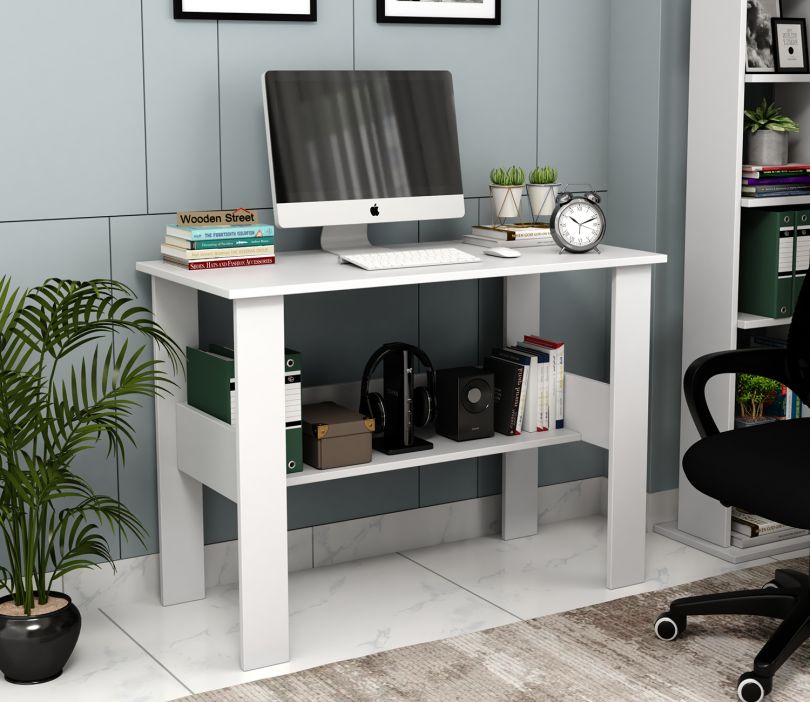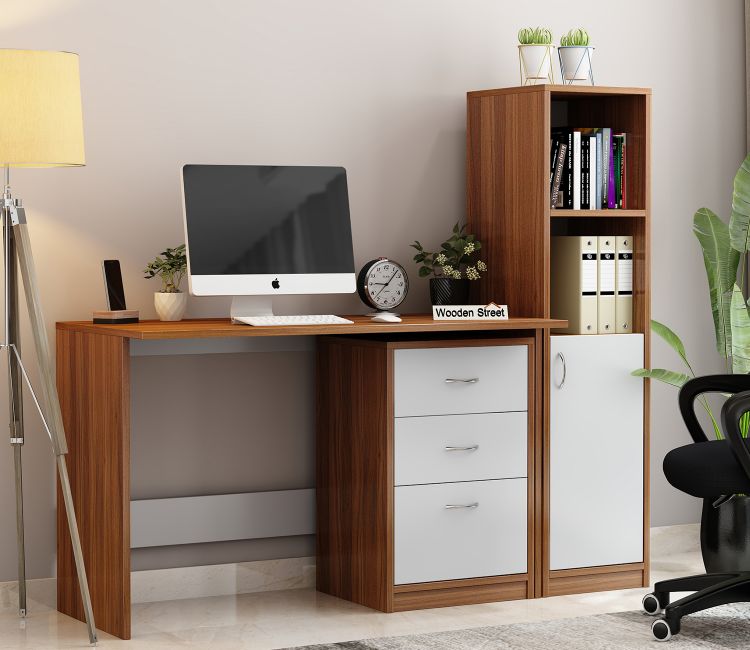A well-designed computer table can dramatically improve your productivity, comfort, and overall aesthetics of your workspace. Whether you’re a student, a remote worker, or a gaming enthusiast, selecting the right computer table goes beyond just looks—it’s about optimizing space, posture, and performance.
This comprehensive guide walks you through all the important aspects to consider when choosing the perfect computer table for your space.
1. Understand Your Purpose and Usage
Before shopping for a computer table, identify how you plan to use it:
-
Is it mainly for work-from-home tasks?
-
Are you a gamer with a multi-monitor setup?
-
Do you need storage for books and office supplies?
-
Will it accommodate a desktop tower or just a laptop?
Your intended use will influence the table’s size, layout, and storage features.
💡 For example, a writer might prefer a minimalist design with ample legroom, while a gamer may need a wide surface, cable management, and RGB lighting.

2. Measure Your Available Space
One of the most common mistakes is purchasing a table that doesn’t fit the available area. Measure the dimensions of the space where you intend to place the computer table, and keep those measurements handy while browsing options.
Also, consider:
-
The space needed for a chair to slide in and out comfortably
-
Walking clearance around the table
-
Room for peripheral devices like printers, scanners, or speakers
Corner desks are great space-saving options for small rooms, while wall-mounted or foldable desks work well in extremely compact spaces.
3. Choose the Right Size and Shape
Computer tables come in various shapes and sizes, including:
-
Rectangle: Classic and versatile; suitable for most users
-
L-shape: Ideal for multitaskers or people using multiple screens
-
U-shape: Best for executives or complex setups
-
Floating/wall-mounted: Perfect for tight spaces
Make sure the table offers enough width and depth for your monitor, keyboard, and any other accessories you need to keep within reach.
4. Focus on Ergonomics
Comfort is key. Poor ergonomics can lead to fatigue, neck and back pain, and reduced productivity.
Key ergonomic features to consider:
-
Height: Standard computer table height ranges from 28 to 30 inches. Ensure your elbows are at a 90-degree angle when typing.
-
Legroom: A minimum of 18 inches depth and 24 inches width of legroom is recommended.
-
Monitor position: The top of your monitor should be at or just below eye level to reduce neck strain.
Optional add-ons like keyboard trays, monitor stands, and footrests can further enhance comfort.
5. Material and Build Quality
The material of the table affects its durability, maintenance, and appearance.
Common materials include:
-
Engineered wood: Budget-friendly and widely used
-
Solid wood: Durable and stylish but more expensive
-
Metal: Strong and modern-looking, often used in combination with wood
-
Glass: Sleek and minimal, though prone to fingerprints and less sturdy
Consider the overall interior theme of your space while choosing the material to ensure harmony with other furniture.
6. Storage Options
A good computer table balances a clean surface with efficient storage. Look for built-in drawers, cabinets, or shelves to store:
-
Notebooks, files, and stationery
-
External drives and tech accessories
-
Router, modem, or UPS units
Tables with cable management grommets or built-in power ports help reduce clutter and improve organization.
7. Style and Aesthetic Appeal
Your table should not only be functional but also complement your room’s décor. Whether you prefer a rustic wooden finish, a modern industrial look, or a minimalistic Scandinavian design, there’s a wide variety of styles available.
If you’re going for a custom or designer look, pay attention to details like:
-
Table legs and frame design
-
Drawer handles and finish
-
Color coordination with your room
This is where the right computer table design can elevate the entire look and feel of your workspace.
8. Budget and Value
Computer tables can range from budget-friendly to premium models. While it’s tempting to go for the cheapest option, remember that you often get what you pay for in terms of durability and functionality.
Tips for making a smart investment:
-
Compare prices from multiple online and offline retailers
-
Look for warranty and after-sales support
-
Read customer reviews for real-world performance insights
Set a budget that allows for both quality and essential features.
9. Assembly and Maintenance
Don’t overlook the setup process. Some tables require full assembly, while others come pre-assembled or semi-assembled.
-
Check if the table comes with an easy-to-follow manual and necessary tools
-
Confirm whether professional assembly is available or required
-
Opt for finishes that are easy to clean and maintain
A low-maintenance table with durable surface coating saves you time and effort in the long run.
10. Future-Proof Your Workspace
As your needs grow, your desk should be able to adapt. Consider the flexibility of the design:
-
Is there room to expand or add more accessories?
-
Can it accommodate future gadgets like a second monitor or a larger CPU?
-
Does the design allow easy reconfiguration or movement?
Future-proofing saves you from having to replace the table sooner than necessary.
Conclusion
Choosing the perfect computer table involves more than picking something that “looks nice.” It’s about finding the ideal blend of comfort, utility, durability, and style that fits your specific needs and space. From determining the size and shape to evaluating material and storage, each decision plays a crucial role in how well your workstation serves you.
With a thoughtful approach and focus on quality, you’ll be well on your way to finding a computer table design that not only meets your current needs but also enhances your productivity and well-being for years to come.
